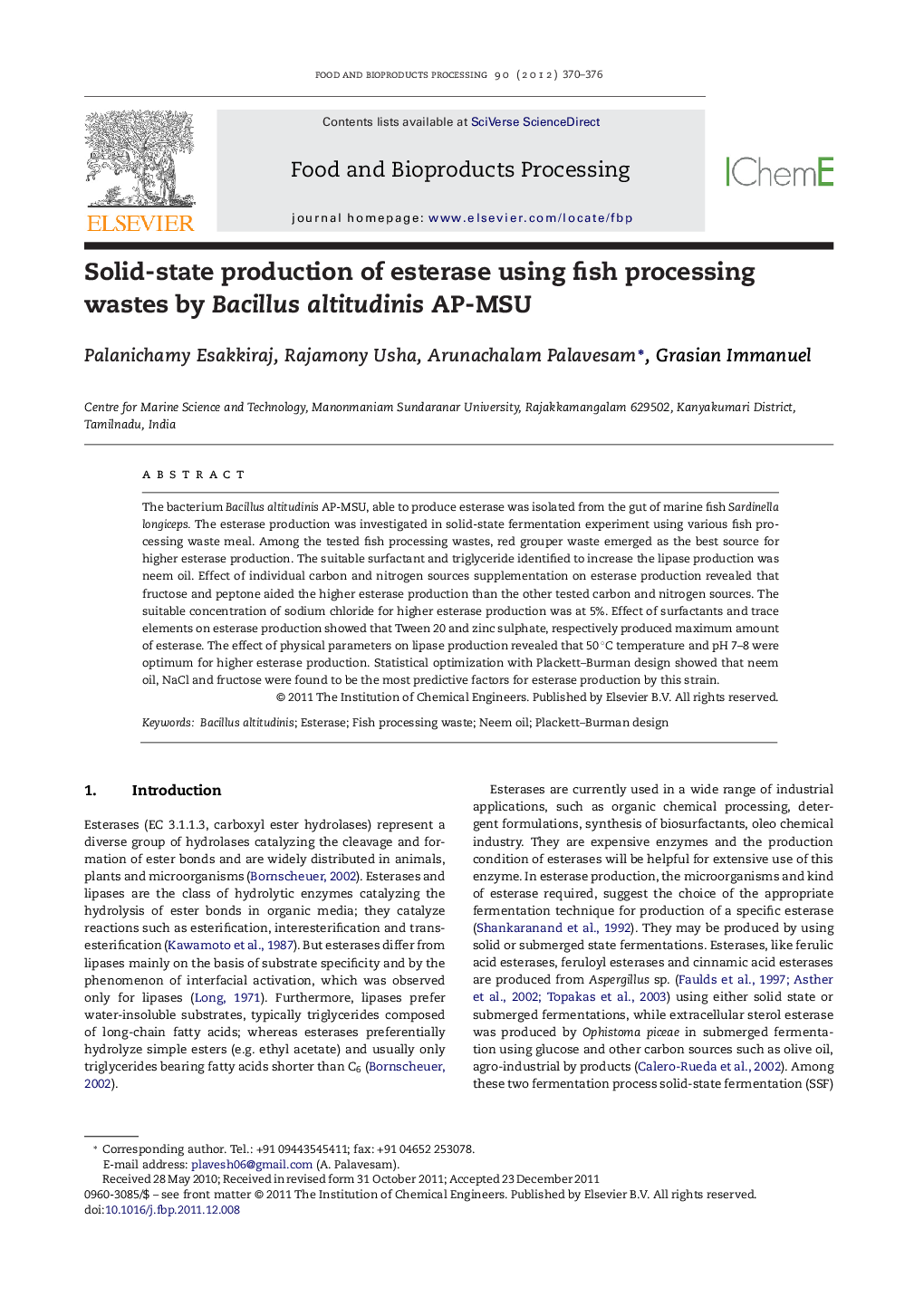| Article ID | Journal | Published Year | Pages | File Type |
|---|---|---|---|---|
| 19050 | Food and Bioproducts Processing | 2012 | 7 Pages |
The bacterium Bacillus altitudinis AP-MSU, able to produce esterase was isolated from the gut of marine fish Sardinella longiceps. The esterase production was investigated in solid-state fermentation experiment using various fish processing waste meal. Among the tested fish processing wastes, red grouper waste emerged as the best source for higher esterase production. The suitable surfactant and triglyceride identified to increase the lipase production was neem oil. Effect of individual carbon and nitrogen sources supplementation on esterase production revealed that fructose and peptone aided the higher esterase production than the other tested carbon and nitrogen sources. The suitable concentration of sodium chloride for higher esterase production was at 5%. Effect of surfactants and trace elements on esterase production showed that Tween 20 and zinc sulphate, respectively produced maximum amount of esterase. The effect of physical parameters on lipase production revealed that 50 °C temperature and pH 7–8 were optimum for higher esterase production. Statistical optimization with Plackett–Burman design showed that neem oil, NaCl and fructose were found to be the most predictive factors for esterase production by this strain.
► This article demonstrates the cost effective esterase production using fish processing wastes by marine fish gut isolate Bacillus altitudinis. ► The bacterium Bacillus altitudinis AP-MSU, able to produce esterase was isolated from the gut of marine fish Sardinella longiceps. ► The esterase production was investigated in solid-state fermentation experiment using red grouper waste. ► Optimization of esterase production was investigated by using statistical designs.
